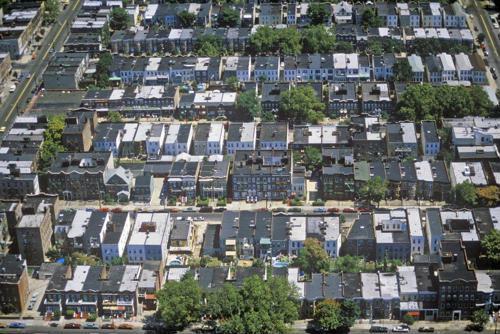Going from the suburbs to the city is a big transition. While suburbs are at least somewhat close to a city by definition, they can offer a substantially different way of life. From how you plan to get around on a daily basis to what you and your family want to do on the weekends, a move to the city is major change.
Planning your move from suburb to city
"Space for moving trucks is at a premium in many cities."
Moving in the suburbs offers one major luxury many spaces inside cities don't: space. Whether it's a driveway or open space on the road by a single-family home or the parking lot of an apartment complex, you usually don't have to worry about where you or your movers will park the truck.
In cities, there's far less space per person. That's why it's so important to do the research - you need to balance ease of access and proximity to your new home with local parking regulations and the general abundance of people and cars. If you're renting from a landlord or moving into a building with a homeowners' or similar association, contact them for more guidance. If you're purchasing an individual unit, talk to the previous residents and your new neighbors to figure out the best space to park the truck.
A related need that comes up during moving day is the location of and access to recycling and trash receptacles. It's easy to figure out where these are located ahead of time and allows you to avoid having a stack of boxes and used packing material sit inside your new home, taking up space as you try to settle in.
You also need to take the possibility of downsizing into account if your new space is smaller. Compare current and new square footages to start with, then consider how much of your stuff can comfortably fit in that area. Storage space is also at a premium in cities. You'll have a better idea of your specific situation once you pick out your new home, but it's important to remember that, in general, closets, garages, basements and other storage areas tend to be smaller or less common as compared to the suburbs.
Adjusting to life in a new environment
Living in the city can be exciting, broadening your horizons and offering a variety of activities that are hard to find in less densely populated areas. However, it can easily feel confusing and overwhelming at the same time.
To get more comfortable, spend a little time in your new neighborhood before you move in. Identify where things like grocery stores, pharmacies, hardware stores and other staples are located, and check out some local shops and restaurants. Asking neighbors for recommendations is a good way to both introduce yourself and gain some valuable advice. When you know how to get around your neighborhood, navigating it - and, eventually, the rest of the city - becomes less stressful.
You should pay special attention to public transit options, especially if you don't have a personal or family car. Buses, trains and other vehicles are prevalent in many cities, and offer a number of benefits ranging from environmental friendliness to low costs. Finding out where your nearest public transit stops are, where they go and which other stops they connect to is a good start and will help you plan your first days in your new city.
No matter what city you move to, Atlas is here to help make the experience as simple and easy as possible. Get a quote with us today to have our experienced, professional movers and packers handle the heavy lifting.

